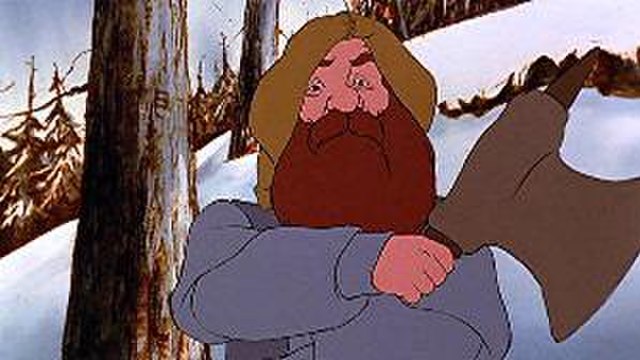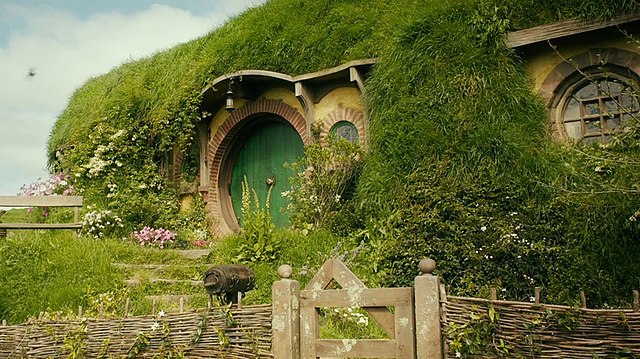In the fantasy of J. R. R. Tolkien, the Dwarves are a race inhabiting Middle-earth, the central continent of Arda in an imagined mythological past. They are based on the dwarfs of Germanic myths who were small humanoids that lived in mountains, practising mining, metallurgy, blacksmithing and jewellery. Tolkien described them as tough, warlike, and lovers of stone and craftsmanship.
Tolkien found dwarves in Norse mythology. Here the god Thor talks to the dwarf Alviss to prevent him from marrying his daughter Þrúðr; at dawn Alviss turns to stone. Drawing by W. G. Collingwood, 1908
The petty-dwarf Mîm may derive from the shrunken figure of Mime, here shown cowering behind the celebrating Siegfried in Wagner's opera Der Ring des Nibelungen. Illustration by Arthur Rackham, 1911
Gimli in Ralph Bakshi's The Lord of the Rings (1978) voiced by David Buck
Dwarves at the Council of Elrond in Peter Jackson's The Fellowship of the Ring
Middle-earth is the setting of much of the English writer J. R. R. Tolkien's fantasy. The term is equivalent to the Miðgarðr of Norse mythology and Middangeard in Old English works, including Beowulf. Middle-earth is the human-inhabited world, that is, the central continent of the Earth, in Tolkien's imagined mythological past. Tolkien's most widely read works, The Hobbit and The Lord of the Rings, are set entirely in Middle-earth. "Middle-earth" has also become a short-hand term for Tolkien's legendarium, his large body of fantasy writings, and for the entirety of his fictional world.
A detail of Middle-earth in one of Peter Jackson's film sets
Medieval Christian cosmology: heaven above, earth in the middle, hell below. Vank Cathedral, Isfahan.






